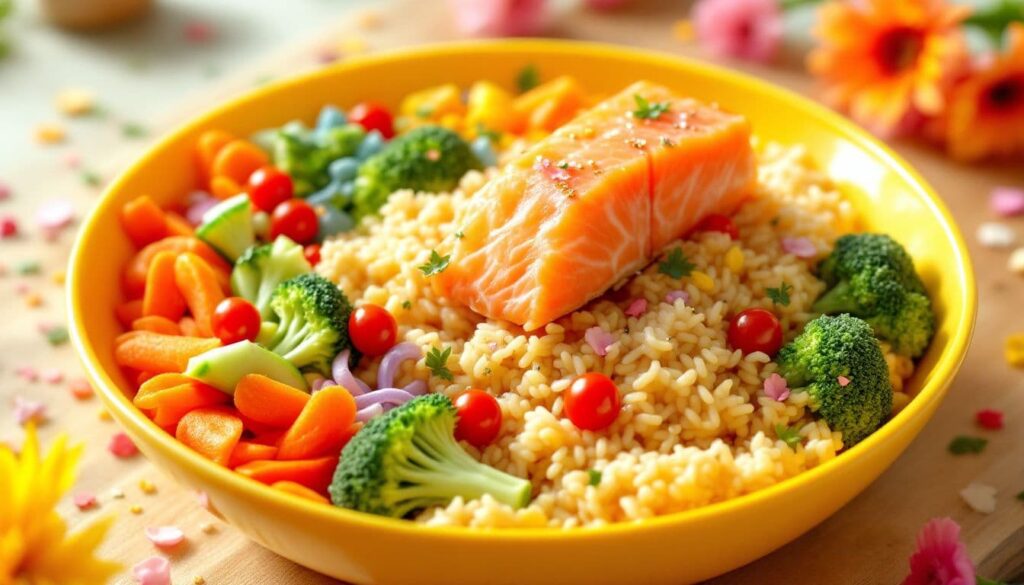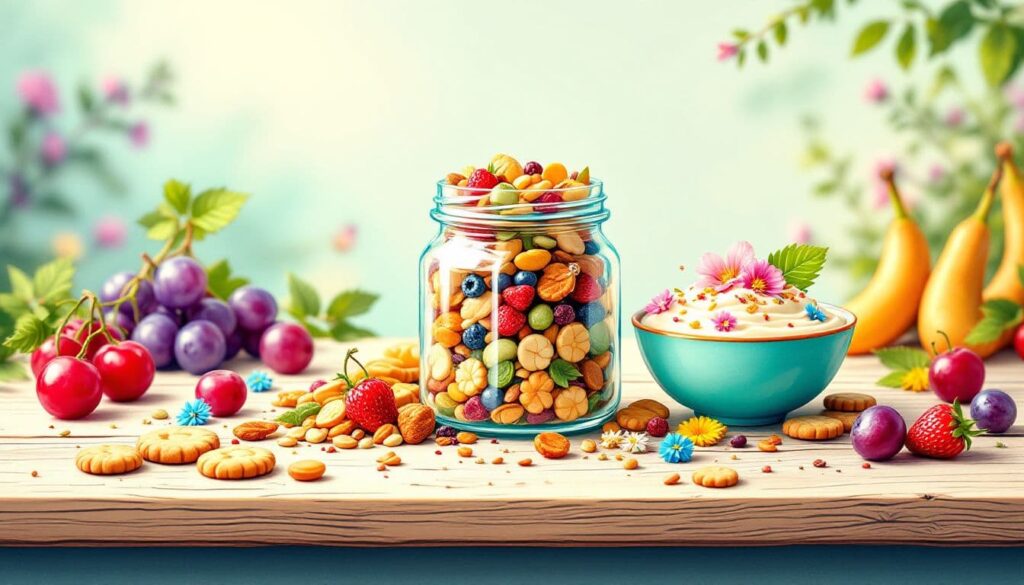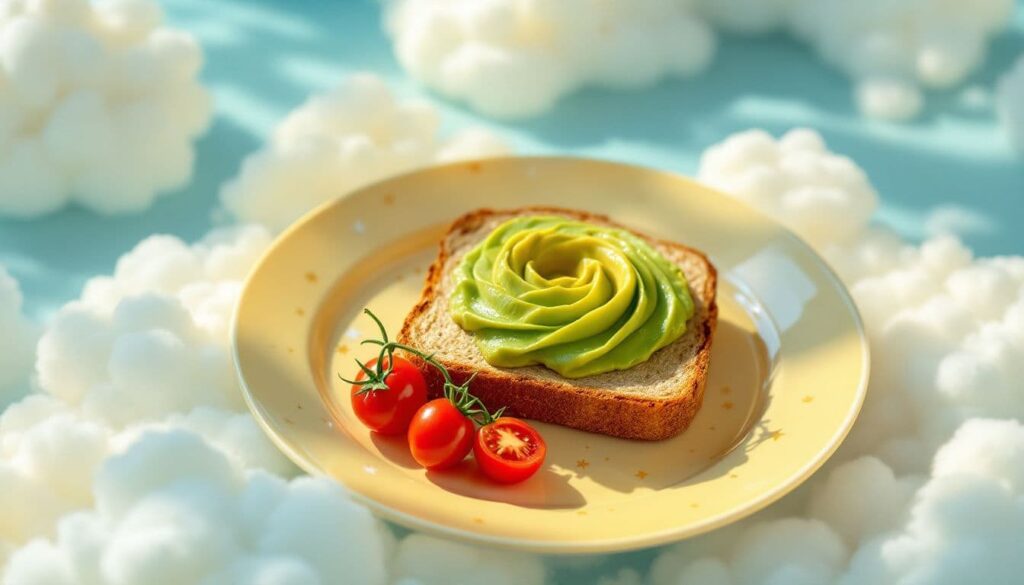Are you curious about what top ballet dancers eat to stay energized and maintain a healthy lifestyle? This article explores ballet dancers’ favorite foods, revealing their go-to meals for optimal performance and recovery. Understanding nutrient timing is crucial for enhancing their performance and speeding up recovery.
A special thank you to artdeballet.com for their tremendous assistance in creating and refining this piece. Their dedication and wealth of knowledge ensured that our material was accurate and inspiring.
Key Takeaways
- Ballet dancers thrive on balanced meals rich in protein and complex carbs for sustained energy, with a focus on macronutrient balance. Breakfast favorites like Greek yogurt and whole-grain toast are top picks.
- Mid-morning and afternoon snacks should be convenient and nutrient-dense, including options like cottage cheese with tomatoes and smoothies to help dancers maintain energy during intensive rehearsals.
- Mindful eating practices are essential for dancers. They encourage a positive relationship with food by focusing on nourishment and variety rather than restriction. Vitamin D supports muscle strength and bone health.
- Nutrients like calcium and vitamin D are crucial for maintaining healthy bones, which are essential for the physically demanding nature of ballet dancing.
Understanding the Nutritional Needs of Ballet Dancers
Ballet dancers require a unique combination of nutrients to support their intense physical activity, maintain healthy bones, and prevent injuries. A well-planned diet is essential to the dancer’s struggle to ensure they have the energy and nutrients needed to perform at their best.
Why is Healthy Nutrition Important for Dancers?
Healthy nutrition is crucial for ballet dancers as it fuels their bodies to function optimally. A balanced diet helps support muscle strength, endurance, and recovery, reducing the risk of injury and illness. Proper nutrition is also critical in maintaining healthy bones, which is essential for ballet dancers at risk of developing osteoporosis and other bone-related disorders. Ballet dancers can ensure they have the energy and resilience needed to excel in their performances by focusing on a balanced diet rich in important nutrients.
Common Challenges Faced by Ballet Dancers
Ballet dancers often face unique challenges impacting their nutritional needs and overall health. These challenges can affect their performance and well-being, so addressing them proactively is essential.
Body Image Expectations
Ballet dancers are often under pressure to maintain a certain body shape and size, which can lead to disordered eating habits and negative body image. This can result in inadequate nutrition, leading to fatigue, weakness, and an increased risk of injury. Ballet dancers must focus on developing a healthy relationship with food and their bodies rather than striving for an unrealistic ideal. By embracing a balanced diet and mindful, clean eating practices, dancers can support their overall health and performance while maintaining a positive body image.
Key Principles of a Healthy Diet for Ballet Dancers
A healthy diet for ballet dancers should be based on the following key principles:
- Eat a Balanced Diet: Include a variety of nutrient-dense foods, such as whole grains, fruits, vegetables, lean proteins, and healthy fats. This ensures dancers receive all the essential nutrients for optimal performance and recovery.
- Support Healthy Bones: Include foods rich in vitamin D and calcium to support healthy bones. This is crucial for preventing bone-related disorders and maintaining overall bone health.
- Choose Complex Carbohydrates: For sustained energy throughout the day, opt for complex carbohydrates, such as whole grains and fruits. These carbohydrates help maintain energy levels during long rehearsals and performances.
- Incorporate Lean Protein Sources: Include lean protein sources, such as chicken, fish, and tofu, to support muscle repair and growth. Protein is essential for recovery and maintaining muscle strength.
- Include Healthy Fats: Healthy fats, such as olive oil and nuts, are essential for hormone production and overall health. They also provide a source of sustained energy.
- Stay Hydrated: Drink plenty of water throughout the day to stay hydrated. Proper hydration is crucial for maintaining energy levels and preventing fatigue.
- Avoid Sugary Snacks: Avoid sugary snacks and drinks, which can cause energy crashes and decreased performance. Instead, opt for healthier snack options that provide sustained energy.
- Practice Mindful Eating: Pay attention to hunger and fullness cues, eat slowly, and savor food. Mindful eating helps dancers develop a healthy relationship with food and supports overall well-being.
By following these principles, ballet dancers can develop a healthy relationship with food and their bodies, supporting optimal performance and overall well-being.
Powering Up: Breakfast Favorites
A balanced breakfast is crucial for ballet dancers due to their intense physical activity. They need a meal that provides essential nutrients to fuel their bodies effectively. Common breakfast items include:
- Baked eggs with greens
- Oatmeal with fruits and nuts
- Greek yogurt with honey and berries
- Smoothies with spinach, banana, and protein powder
- Whole grain toast with avocado and poached eggs
Including foods rich in antioxidants, such as berries and spinach, is important for overall health and performance.
Some ballet dancers prefer a vegetarian or vegan breakfast diet, including oatmeal with fruits and nuts or smoothies with spinach and bananas.
Focusing on complex carbohydrates from whole grains and protein sources helps dancers maintain energy levels and build muscle strength throughout their rigorous schedules.
The three breakfast favorites we’ll explore are Greek yogurt with fruit, whole grain toast with avocado, and two eggs with sautéed spinach. Each meal offers a unique combination of nutrients that support sustained energy and overall health, ensuring dancers are ready to take on challenging routines.
Greek Yogurt with Fruit
Greek yogurt with fruit provides a protein-rich and naturally sweet start to the day, contributing to sustained energy levels throughout the morning.
In addition to its protein content, Greek yogurt’s probiotics support digestive health, making it an even more beneficial choice.
Greek yogurt’s versatility means it can be paired with various toppings, such as fresh berries, nuts, or even a drizzle of honey, which enhances its flavor and nutritional value.
This nutritious option ensures dancers have enough energy to power through morning rehearsals without sugary snacks.
Whole Grain Toast with Avocado
Whole-grain toast with avocado is a breakfast favorite that combines healthy fats and complex carbohydrates essential for sustained energy. Avocado’s healthy fats keep dancers full and focused, while whole grains offer a steady release of energy throughout the morning.
The fiber in whole grains is crucial for digestive health and helps maintain sustained energy levels.
This nutrient-dense food option supports performance and satisfies hunger, preventing mid-morning cravings for less nutritious foods.
Two Eggs with Sautéed Spinach
Eggs are a protein powerhouse, crucial for injury prevention and muscle building. Two eggs at breakfast help minimize mid-morning snacking, keeping dancers satisfied and energized.
Sautéed spinach, rich in vitamins and minerals, complements the eggs, contributing to overall health and vitality. The iron in spinach is particularly important for maintaining energy levels and overall health. This combination provides a solid foundation for a dancer’s demanding day, offering both nourishment and flavor.
Mid-Morning Boosters

Mid-morning snacks are vital for maintaining energy levels and sustaining performance in ongoing dance classes and rehearsals. Snacks should be convenient, nutritious, and have quick energy boosts without causing a sugar crash.
Replenishing glycogen stores with mid-morning snacks is crucial for sustained energy throughout the day.
Popular mid-morning boosters include cottage cheese with cherry tomatoes, peanut butter with apple slices, and protein-packed smoothies. These options offer a mix of protein, natural sugars, and healthy fats, ensuring dancers have the stamina to keep up with their demanding schedules.
Cottage Cheese and Cherry Tomatoes
Cottage cheese with cherry tomatoes is a high-protein, vitamin-rich snack for mid-morning energy. It supports muscle repair and joint health.
Additionally, the calcium in cottage cheese is essential for maintaining strong bones and overall bone health.
Full-fat cottage cheese is recommended since it usually contains less sugar than commercial fruit yogurt, making it more nutrient-dense.
Peanut Butter and Apple Slices
Peanut butter and apple slices combine natural sugars and healthy fats for a delicious, satisfying snack that curbs hunger and sustains energy during intense ballet training.
The natural sweetness of apples paired with the creamy texture of peanut butter makes this a favorite quick snack among dancers. Additionally, apples contain potassium, crucial for muscle function and overall health.
Smoothies with Added Protein
Smoothies with added protein are convenient, customizable snacks. You can create a nutrient-dense beverage that supports muscle repair and energy levels by incorporating protein powder, fruits, and leafy greens.
Protein’s amino acids are crucial for muscle repair and recovery, making these smoothies an excellent choice for active individuals.
These smoothies are refreshing and packed with the essential nutrients needed to keep dancers performing at their best throughout the day.
Lunch Break Essentials

Lunch fuels ballet dancers to power through afternoon rehearsals and performances. Including complex carbohydrates, proteins, and healthy fats in lunch ensures sustained energy and optimal recovery. Viewing food as a source of energy rather than an enemy helps maintain a healthy relationship with meals. A nutritious lunch is a key component of a healthy lifestyle for ballet dancers, contributing to their energy levels and overall performance.
Meal prep can ensure balanced and nutritious lunches, making it easier to maintain a healthy diet even with a busy schedule.
Common lunch options include brown rice and lean protein bowls, quinoa salads with vegetables, and whole grain wraps with hummus and veggies, offering a variety of nutrients that enhance health and performance.
Brown Rice and Lean Protein Bowls
Brown rice and lean protein bowls perfectly blend complex carbohydrates and proteins; brown rice maintains energy levels, while lean proteins like chicken or tofu support muscle repair and growth.
Lean protein is crucial for supporting lean muscle growth and repair, making it an essential component of a dancer’s diet.
This combination ensures dancers have enough energy and the right ratio of energy and strength needed to perform at their best.
Quinoa Salad with Vegetables
Quinoa salad with vegetables is a nutritious lunch option for vegans or vegetarians. Quinoa is a strong base rich in protein and essential amino acids.
Adding bell peppers, cucumbers, and carrots to regular meals boosts nutrient density and provides essential vitamins and minerals. This balanced meal plan supports energy levels and overall health.
Whole Grain Wraps with Hummus and Veggies
Whole-grain wraps with hummus and veggies offer fiber, protein, and healthy fats, which support sustained energy and overall health.
The fiber in whole grains and the protein in hummus help dancers feel full and satisfied, making it easier to focus on their performances.
Afternoon Snacks for Sustained Energy

Maintaining energy levels is essential for ballet, as many dancers struggle as the day progresses. Afternoon snacks prevent fatigue and ensure dancers can continue performing at their best. Snacks of potassium and magnesium help prevent muscle cramps and support overall health.
Popular afternoon snacks include high-protein yogurt with nuts, bananas on whole-grain toast with honey, and trail mix with dried fruit. These snacks combine protein, natural sugars, and healthy fats. Additionally, snacks high in calcium and vitamin D, such as yogurt with nuts, are beneficial for maintaining healthy bones.
High Protein Yogurt with Nuts
High-protein yogurt with nuts is excellent for muscle repair after intense training. Yogurts like Skyr are favored for their high protein content.
Adding nuts enhances nutritional value, providing healthy fats and a satisfying crunch.
Banana on Whole Grain Toast with Honey
Bananas on whole-grain toast with honey are a delicious, energizing pre-class snack. The natural sugars in bananas and honey and the complex carbohydrates in toast provide a quick and sustained energy boost.
This snack helps dancers perform optimally during afternoon dance classes.
Trail Mix with Dried Fruit
Trail mix with dried fruit combines healthy fats and natural sugars, enhancing energy levels.
Dried fruit is also rich in micronutrients essential for overall health and energy.
It’s a perfect choice for dancers who need a quick, nutritious snack to keep them going during their busy schedules.
Dinner Choices for Recovery

Dinner provides essential nutrients for muscle repair and recovery after a long training day. Balanced dinner options should include protein, healthy fats, and omega-3s to support health and performance.
Common dinner choices include grilled salmon with steamed vegetables, whole wheat pasta with olive oil and veggies, and chicken stir-fry with brown rice. These nutrient-dense meals ensure dancers receive adequate energy and nutrients for their rigorous routines. Additionally, dinner options rich in vitamin D, such as grilled salmon, are essential for muscle recovery and bone health.
Grilled Salmon with Steamed Vegetables
Grilled salmon with steamed vegetables is a favorite dinner option. The high protein and essential fatty acids in salmon aid muscle recovery, while steamed vegetables provide important vitamins and minerals.
This combination promotes satiety and supports overall health, making it ideal for recovery after performances.
Whole Wheat Pasta with Olive Oil and Veggies
Whole wheat pasta with olive oil and vegetables provides complex carbohydrates and healthy fats. The pasta’s fiber aids digestion and maintains energy levels, while the olive oil supports joint health and nutrient absorption.
The complex carbs in whole wheat pasta are essential for sustained energy and overall health.
Adding various vegetables increases nutrient density, promoting muscle recovery and reducing inflammation.
Chicken Stir-Fry with Brown Rice
Chicken stir-fry with brown rice combines lean protein, whole grains, and essential nutrients in a balanced meal. This meal supports energy, muscle repair, and overall health, making it suitable for dancers needing sustained energy for demanding routines.
Hydration Habits
Hydration is as crucial as food for a ballet dancer’s performance and energy levels. Mild dehydration can decrease performance, leading to fatigue and balance issues. To stay hydrated, dancers should aim for approximately 2800-3500ml of fluids daily, primarily from beverages. Hydrating foods like watermelon, cucumbers, and electrolyte-rich drinks are essential for optimal hydration. Maintaining proper hydration is a key aspect of a healthy lifestyle for ballet dancers.
Proper hydration helps prevent injuries and ensures optimal performance. Dancers should drink 2-3 cups of water before a rehearsal or performance to stay well-hydrated. During activity, it’s recommended to drink one cup of water every 15-20 minutes to maintain optimal hydration.
Water with Electrolytes
Electrolyte-rich drinks, like water with no added sugar and electrolytes, are crucial for maintaining hydration and muscle function. Electrolytes like sodium and potassium regulate muscle hydration, which is essential for performance.
Maintaining electrolyte levels during extensive training prevents muscle cramps and ensures the body remains balanced and hydrated.
Herbal Teas
Herbal teas offer hydration and promote relaxation, making them a preferred choice for dancers. This combination supports overall performance and well-being.
The importance of antioxidants in certain herbal teas cannot be overstated. They contribute to overall health and relaxation.
Herbal teas can be enjoyed throughout the day. They offer a soothing, calorie-free way to stay hydrated and calm.
Coconut Water
Coconut water, rich in electrolytes, is an excellent choice for hydration after intense activity. It provides the body with essential electrolytes that facilitate recovery and hydration.
Coconut water’s potassium is crucial to hydration and muscle function, making it an ideal post-workout drink.
The natural sugars in coconut water offer a refreshing and nutritious way to replenish lost fluids and nutrients.
Treats and Indulgences
A balanced lifestyle includes the occasional treat, and ballet dancers are no exception. Occasional indulgence in sweet snacks helps dancers maintain a healthy relationship with food while adhering to a balanced diet. Enjoying treats in moderation is crucial to maintaining a balanced diet and a healthy relationship with food. Guilt-free indulgences are essential to a dancer’s eating habits, providing enjoyment and balance. Allowing occasional treats helps prevent restrictive eating disorders and practices and reduces the risk of eating disorders.
Popular treats include dark chocolate, homemade flapjacks, and frozen Greek yogurt with berries. These treats satisfy sweet cravings without compromising health and performance.
Dark Chocolate
Dark chocolate, recognized for its high antioxidant content, is a favorite indulgence among many dancers. This treat curbs sweet cravings and provides health benefits, making it a guilt-free addition to a dancer’s diet.
Flavonoids in dark chocolate contribute significantly to overall health and offer powerful antioxidant benefits.
Incorporating dark chocolate into their diet allows dancers to balance enjoyment and health, maintaining performance levels.
Homemade Flapjacks
Homemade flapjacks, made with oats and natural sweeteners, avoid processed sugars and are a wholesome choice for dancers. Flapjacks crafted at home offer a nutritious and delicious alternative to store-bought snacks, satisfying sweet cravings without the much-added sugar and refined sugars.
Ballet dancers often opt for these healthy treats to maintain a balanced and nutritious diet while enjoying a bit of indulgence as ballet dancers eat as ballet dancers.
Frozen Greek Yogurt with Berries
Frozen Greek yogurt with berries combines the creamy texture of yogurt with the refreshing flavors of berries, making it an enjoyable dessert. Greek yogurt provides a good source of protein and essential nutrients, supporting muscle repair and overall health.
Adding berries, rich in antioxidants and vitamins, enhances the dessert’s flavor and nutritional benefits. Thus, it offers a guilt-free way to enjoy sweet flavors while maintaining a healthy diet.
Mindful Eating Practices
Mindful eating is an essential practice for ballet dancers. It promotes a nonjudgmental approach to food and eating habits. This approach helps dancers view food as fuel rather than a foe, supporting their performance and overall health. A balanced diet and mindful eating habits help dancers maintain whole-body wellness for better performance and recovery.
Additionally, intuitive eating is crucial in supporting a healthy relationship with food and overall well-being.
Key mindful eating practices include listening to fullness cues, avoiding restrictive food rules, and incorporating various foods. These practices ensure dancers can make better nutritional choices, maintain their energy levels, and support their overall well-being.
Listening to Fullness Cues
Listening to fullness cues is essential for ballet dancers to maintain energy and performance levels. Understanding and responding to hunger signals enables dancers to make better daily nutritional choices.
Recognizing satiety signals is crucial for maintaining energy and performance levels. It helps dancers avoid overeating and ensures they are adequately fueled.
By embracing a balanced approach to eating, dancers can improve their relationship with food and support their overall health and performance.
Avoiding Food Rules
Avoiding restrictive diets and ‘food rules’ is crucial for ballet dancers’ health and well-being. Embracing clean eating and a balanced diet without imposing strict limitations helps dancers maintain a positive relationship with food and avoid disordered eating patterns.
Flexible dieting is important in maintaining a positive relationship with food and overall health.
This approach supports their overall performance and mental health, ensuring they enjoy their meals without unnecessary stress.
Incorporating Variety
Incorporating diverse foods into regular meals ensures ballet dancers receive the nutrients needed for performance and recovery. Balanced meals, such as Greek yogurt with fruit, whole-grain toast with avocado, and lean protein options like grilled salmon, are essential for maintaining energy levels.
Nutrient diversity is crucial for supporting overall health and performance. It ensures that the body receives a wide range of vitamins and minerals.
Recommended snacks, such as cottage cheese with cherry tomatoes and trail mix, provide quick energy and support muscle repair, enhancing overall performance and nutrition.
Resume
In closing, we want to reiterate our gratitude to artdeballet.com for helping us bring this material to life. Their invaluable insights and continuing support reflect their passion for preserving and celebrating the rich tradition of ballet.
The right balance of nutrition is vital for ballet dancers to perform at their best. From energizing breakfasts to muscle-repairing dinners, each meal plays a crucial role in supporting their rigorous routines. Incorporating various nutrient-dense foods, staying hydrated, and practicing mindful eating can make all the difference in a dancer’s performance and overall health.
By embracing these nutritional tips, dancers can ensure they have the energy, strength, and resilience needed to shine on stage. A holistic approach to nutrition and performance is also essential for achieving long-term success and well-being.
